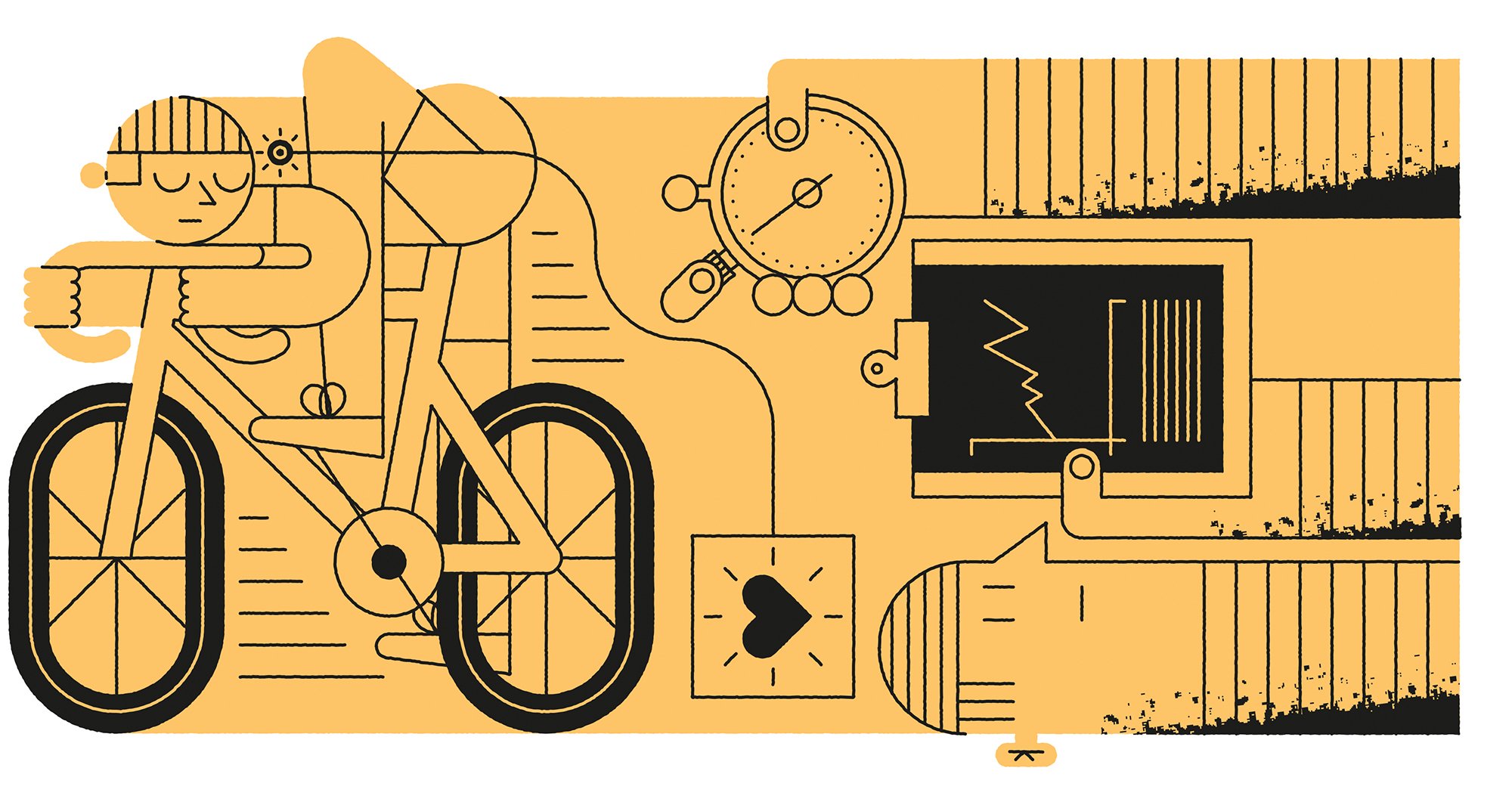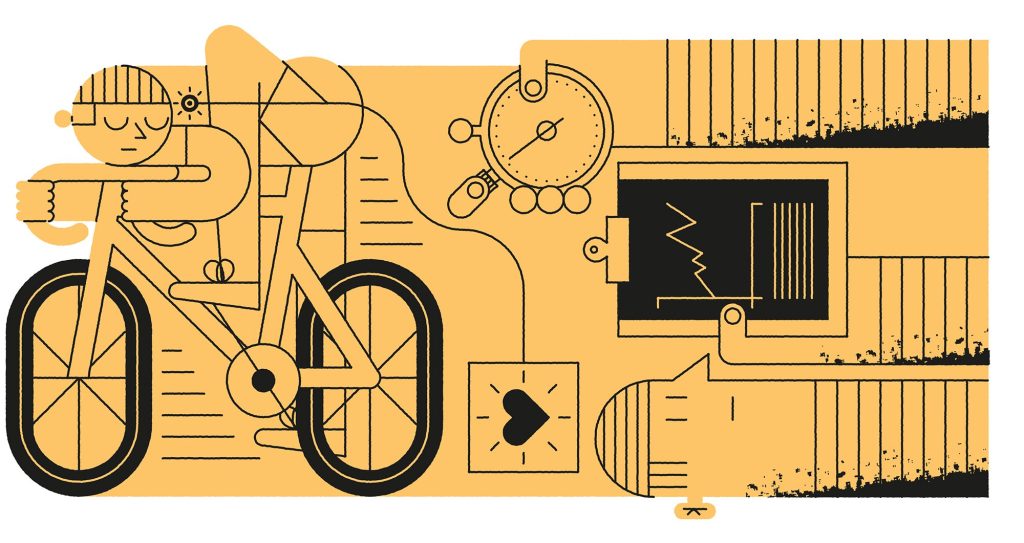Training Without a Power Meter
In the cycling world, a power meter has become a must-have tool to record performance and structure workouts. Not every cyclist has such a device, however, due to its rather high cost. Therefore, there exist methods of training effectively without a power meter, which are primarily based on alternative indicators of intensity.
Heart Rate Monitors
The monitors are a less expensive option in comparison to power meters, and they can signalize about the need for the accomplished cyclist’s input. Using the heart rate zones, it is possible to structure training and improve performance. For example, cyclists may use the zones for their work-interval time trialing: they can do such intervals while having their heart beat at 85-95% of the maximum rate.
Perceived Exertion Scales
This subjective source of intensity measurement is based on Rate of Perceived Exertion , a scale from 1 to 10. The former rate is a very light effort, while 10 is the hardest one. The cyclists can then structure the workouts in the RPE: for example, the hill repeats should be done at 7 or 8, which is a steady climb-cum-sprint that can be encountered in a race.
Interval Training Based on Time
Time-based intervals can be highly efficient. A simple stopwatch can be used for efforts and corresponding 4-minute rest intervals repeated four times. It will remind of the road race or a time trial effort. The pace should remain rather constant, with HR and the RPE in the zones of 5-9.
Speed and Cadence Sensors
Basic cycling computers can be found in every cyclist’s arsenal, as many bicycles, aside from gym spinning machines, have the respective accessories. Training will be highly effective if cyclists make a point of spinning at a certain pedal rate or maintaining a specific speed over a chosen distance. In the former case, it is recommended to change the pedal rate every two to four minutes to improve the resistance to be offered to a certain athlete pace, and in the latter case, now and after it, the speed should be increased.
Video Analysis
This method can be considered a must in athletes training without the power meters. Training should be video-recorded and analyzed to change the way of sitting or the style of handling. This can be highly useful for time trial and trial event athletes.
Training with RPE
Rate of Perceived Exertion, commonly known as RPE, is a great alternative for a power meter, available for every cyclist. It utilizes a subjective scale to define how hard a person is working. Read on to learn how to apply RPE in your training program easily and effectively, supported with bike workout examples and detailed explanations.
Understanding and Applying the RPE Scale
The RPE scale is comprised of numbers from 1 to 10; each number is associated with such an effort level:
This is barely any work, just a walk down the street or to the shop.
This is an all-out effort, something that you can not keep up for more than a few seconds.
The most important thing is to derive effort levels for specific cycling activities. Generally, endurance rides can be around 2-4 in the RPE scale, and this should be 7 or 8 for threshold efforts, meaning that the pedal feels tough, challenging, but possible to remain on a saddle for 10-30 minutes.

Designing RPE-Based Workouts
RPE can be efficiently used in high-intensity interval training workouts. As an example, a trainee can implement to hold several 5-minute-long intervals, which representations should amount to 8 on the RPE scale. Then one can let the heart rate and breathing slow down slightly to complete several minutes at the RPE of two, occasionally three. This work-rest-repeat sequence is repeated during the whole interval training. In this intervals-based mode, race efforts are mimicked; both an aerobic and anaerobic capacity are increased. While the work and rest phases’ effort should be units, a trainee blows off with a unit or two in her/his back pocket after the rest period ends.
Benefits of Using RPE for Long Rides and Climbs
The major advantage is that the cyclist can set his/her effort level relying on how he/she feels or taking external factors into consideration, such as wind or climbs. While climbing, one can stick to a 6 or 7 value, managing her/his situation effectively and remaining at the top not burned out. It is a great teacher to listen to your body and adapt, which is crucial for endurance events.
Integration with Other Training Instruments
RPE is good enough to use on its own, while it can be even more efficient if used in combination with other such instruments as a heart rate. A cyclist will most probably discover that for example six on the RPE scale will correlate to a concrete heart rate range. In this combination, both metrics can provide a clear context and supply a high degree of confidence. An accurately self-assessment is crucial. You should work hard during your RPE intervals and evaluate the results. If the performance is not progressing , take action. RPE bands can be documented in a workout log, noting how they feel, and how it generally affect performance can be done over time.
The Power of Perception
Training without a power meter is not only possible, but it may also be extremely efficient if cyclists learn to take advantage of the power of perception. If one listens to his or her body and makes use of the environmental feedback, training can be more than feasible. The purpose of this section is to give an insight into how perception can be used to maximize the outcomes and provide a number of examples and pieces of advice that may be helpful.
The Role of Body Awareness
Perception is essential in the training that excludes the use of a power meter. It implies being able to use the hints that one’s body provides. It may include such characteristics as breathing rate, tension of muscles, or heart rate that can be used to assess the effort . For example, one can consider that his or her effort level is close to 7 or 8 on the Rate of Perceived Exertion scale when he or she is no longer able to speak at ease . These underpinnings reveal that perception enables riders to follow the pace or rather adjust it using the effort felt by the body at the particular moment . Overall, one becomes able to make use of the perception associated with body awareness and benefit from it simultaneously.
The Role of Environmental Feedback
I agree that changes in the terrain and weather can also be helpful in using perception in training. On extremely windy days, the perceived effort increases even at the pace that is ordinarily not considered as a high one. Thus, it allows a cyclist to slow down and find the acceptable rate . When moving down the hill, one can apply less effort and slower pace if necessary to recover or increase speed . Again, one uses the perception developed based on the feedback from the environment and greatly benefits from it.
How to Build a Workout Based on Perception
Creating a workout based on perception is a rather complex and science-intensive process or rather a mix of science and art. It may involve a guidance such as “climb the hill as many times as necessary feeling very tired by each climbing” . Overall, it means that the cyclist tries to keep the rate of 8 on the Rate of Perceived Exertion scale with some time given to recover after each ascent.
Leveraging Emotional Response
Training without a power meter often requires athletes to rely on less quantifiable, more subjective measures of effort, such as emotional response. This method necessitates paying attention to feelings of motivation, stress, and mental fatigue, which can heavily affect the performance of a cyclist. Here is how cyclists can use their emotional responses to optimize and guide their training.
Recognizing emotional cues
Understanding and recognizing emotional cues during training sessions are essential for managing workout intensity and duration effectively. For instance, feelings of exhilaration tracing back to heightened motivation might suggest that it is a good day to push harder or try a more strenuous route. Conversely, signs of irritability or mental fatigue might indicate that it is a lighter day or even a day off. Proper response to these emotional signals helps keep workouts balanced and appropriately aligned with the body’s readiness to perform.
Structuring sessions
The response to feelings of stress can be incorporated directly into an athlete’s regimen of training. If a cyclist feels strong and motivated on a particular day, this may be a good time to incorporate high-intensity intervals. In this regard, the workout may consist of several very short and very intense bursts of speed, each matched by a longer period of light pedaling to recover and prepare for the next effort. This repeated exercise regimen could be tailored to the day’s emotional stress levels to ensure that training intensity is appropriate and effective.
Emotional recovery techniques
Emotional recovery measures are as important for appropriate training as physical recovery. In this light, techniques such as mindfulness meditation, guided relaxation, or even simple deep breathing exercises can help reduce stress and increase emotional well-being. For instance, proceeding with ten minutes of focused breathing might help reset the emotional state after a particularly challenging ride, ensuring that stress does not accumulate and interfere with the next day’s activity.

Monitoring and adjusting
Finally, monitoring emotional response may provide an athlete with an essential tool for adjusting training regimens over time. Cyclists should make sure to note how they felt emotionally during and after completing the workout in a training diary. Such notes may then be used to adjust training plans and avoid overtraining or burnout. Consistently feeling low motivation and high stress for several weeks may suggest that an athlete needs a few days off or a lighter week of training.
Building emotional resilience
Building emotional resilience is vital for when athletes are training without the direct feedback from a power meter. Some best practices to enhanced resilience include setting realistic goals, cultivating a positive external social environment, and incorporating activities that an athlete enjoys doing outside of professional work. Such training regimen may help build new emotional experiences that an athlete will carry over into training, providing an ability to brush off bad days at training.





